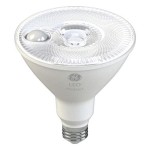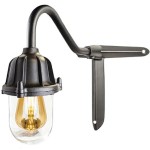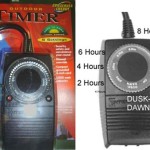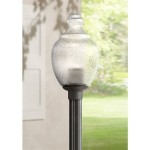Best Shade Plants For Outdoor Pots in Japanese Gardens
Japanese gardens are renowned for their serene beauty and meticulous attention to detail. A key element of this aesthetic is the strategic use of shade-loving plants, which thrive in the dappled light and create a sense of tranquility. When choosing shade plants for your outdoor pots in a Japanese garden setting, consider the specific conditions of your location, the desired aesthetic, and the plant's maintenance requirements. This article will explore some of the best shade plants for outdoor pots that blend seamlessly with the Japanese garden style.
1. Hostas: Versatile and Elegant
Hostas are a popular choice for shade gardens due to their versatility and striking foliage. Known for their large, heart-shaped leaves that come in a variety of colors, textures, and sizes, hostas add a touch of elegance and sophistication to any container. The leaves can range from deep green to blue-green to variegated with shades of yellow or white. Hostas are relatively easy to grow and maintain, making them ideal for beginners. They prefer moist, well-drained soil and partial shade, but can tolerate full shade. When selecting hostas for pots, choose varieties that are compact in growth habit, such as "Blue Angel," "Francee," or "Patriot."
2. Ferns: Whispers of the Forest
Ferns are synonymous with the ethereal beauty of woodland gardens. Their delicate fronds create a sense of tranquility and add a touch of wildness to any space. For a Japanese garden setting, consider ferns with elegant, feathery fronds like the Japanese painted fern (Athyrium niponicum) or the lady fern (Athyrium filix-femina). These ferns prefer moist, well-drained soil and dappled shade. They are relatively low-maintenance but require regular watering during dry periods. When planting ferns in pots, choose containers that allow for adequate drainage and ensure the soil remains moist.
3. Japanese Maples: A Tapestry of Colors
Japanese maples are iconic trees that instantly elevate the aesthetic of any garden. Their delicate foliage and striking fall colors are unmatched. For a Japanese-inspired pot, consider the dwarf varieties of Japanese maples, such as "Sango-kaku" (coral bark maple) or "Bloodgood." These cultivars add a touch of vibrant color and architectural interest to the landscape. Japanese maples prefer well-drained soil and partial shade. They thrive in moist environments and benefit from regular watering. When selecting a pot, choose one that is large enough to accommodate the tree's mature size and provides ample drainage.
4. Astilbes: Cloud-Like Blooms
Astilbes are flowering plants that bring a burst of vibrant color to the shade garden. Their feathery plumes of flowers, which come in shades of pink, white, red, and purple, resemble delicate clouds floating above the foliage. Astilbes prefer rich, moist soil and partial shade. They are relatively easy to grow and maintain, requiring only occasional watering and fertilizing. When choosing astilbes for pots, select varieties with shorter flower stalks for a more compact appearance. Some popular options include "Fanal" (red), "Deutschland" (pink), and "Bridal Veil" (white).
5. Hellebores: Winter Bloomers
Hellebores, also known as Lenten roses, are a unique addition to the shade garden. These plants bloom in late winter or early spring, when most other flowers are dormant. Their delicate, cup-shaped flowers come in shades of pink, white, green, and purple, adding a touch of elegance to the winter landscape. Hellebores prefer rich, moist soil and partial shade. They are low-maintenance plants that require minimal care. When planting hellebores in pots, choose containers that provide good drainage and ensure the soil remains moist. The vibrant color of the flowers provides a welcome contrast to the muted colors of winter.
6. Japanese Pieris: A Touch of Elegance
Japanese pieris (Pieris japonica) is a beautiful evergreen shrub that adds a touch of elegance to the shade garden. Its foliage is deeply veined and can range in color from green to bronze to red, depending on the variety. In spring, Japanese pieris produces clusters of bell-shaped flowers that add pops of color to the landscape. They prefer acidic soil and partial shade. They are relatively easy to grow and maintain, requiring regular watering and occasional pruning. When choosing a Japanese pieris for a pot, select a dwarf variety for a more manageable size. Some popular options include "Mountain Fire" (red foliage and white flowers) and "Little Heath" (compact size and pink flowers).
7. Hydrangeas: A Symphony of Colors
Hydrangeas are beloved for their large, showy flower heads that come in a wide range of colors. These flowers are often reminiscent of fireworks, adding a sense of celebration and joy to the garden. For a Japanese garden setting, consider the lacecap hydrangea (Hydrangea macrophylla), which features smaller, more delicate flowers clustered around a central core. Hydrangeas prefer moist, well-drained soil and partial shade. They require regular watering and pruning to maintain their shape. When planting hydrangeas in pots, choose containers that are large enough to accommodate their mature size and provide ample drainage. The vibrant colors of the hydrangeas create a striking contrast with the muted tones of the surrounding landscape.
8. Rhododendrons: Ancient Beauty
Rhododendrons are ancient flowering shrubs renowned for their striking beauty and vibrant colors. Their glossy, evergreen leaves provide year-round interest, while their trumpet-shaped flowers bloom in shades of pink, purple, red, and white. Rhododendrons prefer acidic soil and partial shade. They require regular watering and occasional pruning to maintain their shape. When selecting rhododendrons for pots, choose dwarf varieties that are suitable for container growing. Some popular options include "Pink Delight" (pink flowers) and "Red Rocket" (red flowers).
9. Bamboo: A Touch of Zen
Bamboo is a versatile plant that adds a touch of zen to any garden. Its graceful stems and rustling leaves create a sense of tranquility and evoke the spirit of Japanese gardens. For a container setting, consider dwarf varieties of bamboo, such as "Shiroshima" (white-striped) or "Sasa" (clumping). Bamboo prefers moist, well-drained soil and partial shade. It requires regular watering and occasional pruning to maintain its shape. When planting bamboo in pots, choose containers that are large enough to accommodate its mature size and provide ample drainage.

9 Best Plants For A Japanese Garden With Pictures Care Guides Trees Com

9 Best Plants For A Japanese Garden With Pictures Care Guides Trees Com

Best Shade Plants For Pots Container Ideas Garden Design

Best Shade Plants For Pots Container Ideas Garden Design

Ideas For Stylish Shady Container Gardens Fine Gardening

Best Shade Plants 30 Gorgeous Container Garden Planting Lists A Piece Of Rainbow

Best Shade Plants For Pots Container Ideas Garden Design

These 15 Signature Oriental Plants Inspire Garden Serenity And Tranquility Horticulture

Browse Shade Loving Plants Flowers Architectural

Growing Japanese Maples In Containers Conifer Kingdom
Related Posts







